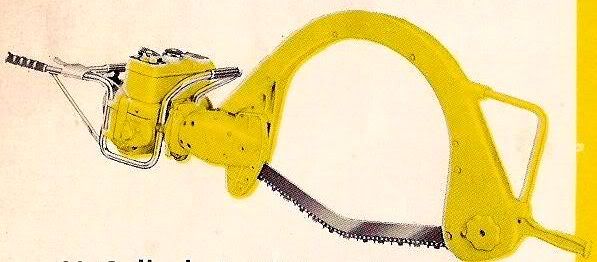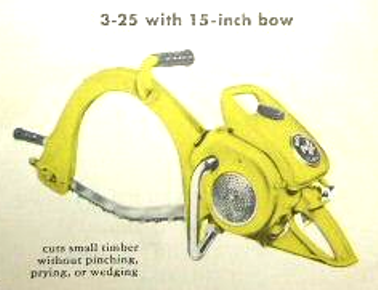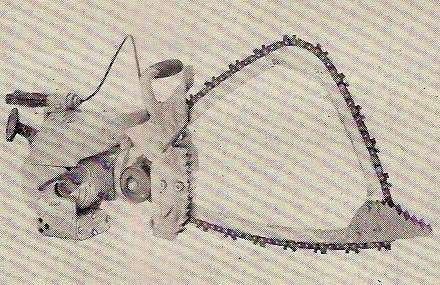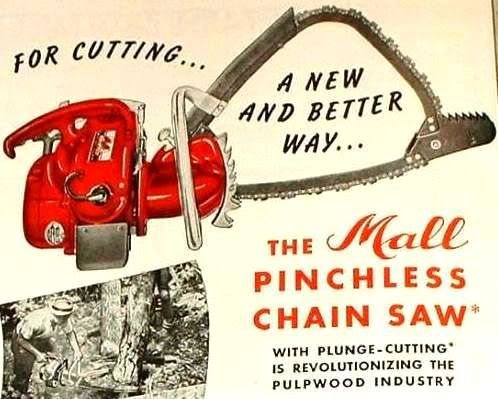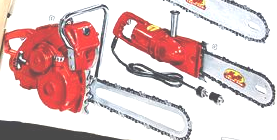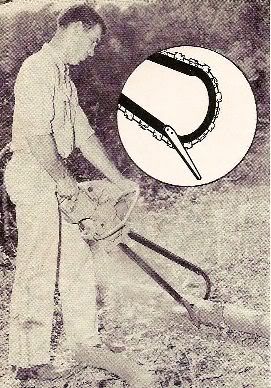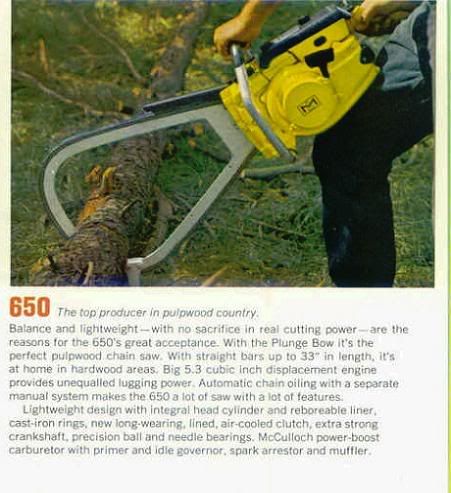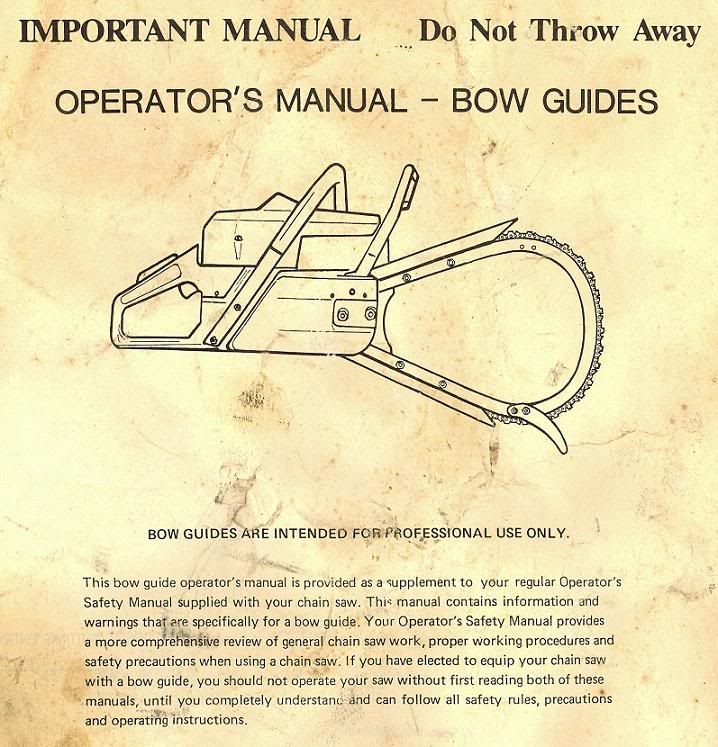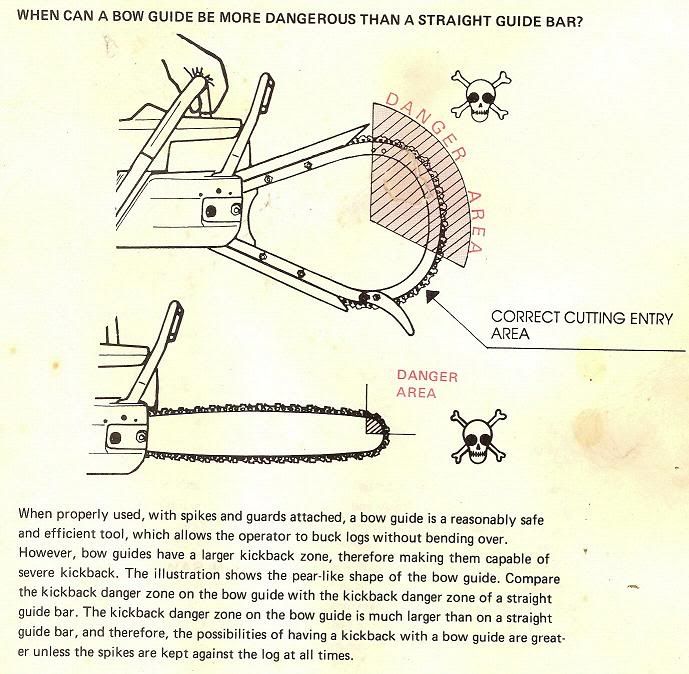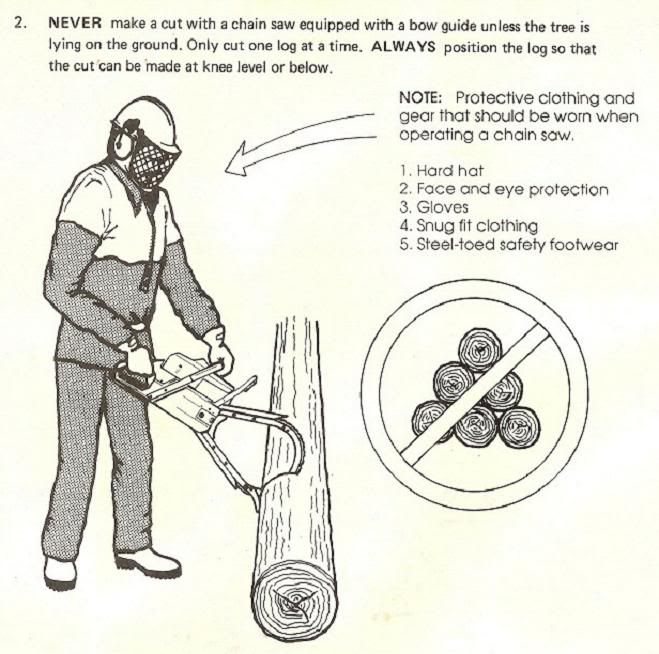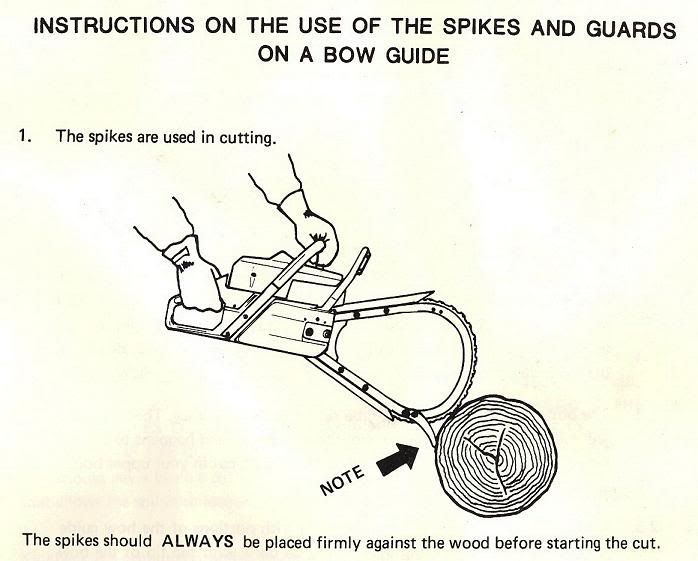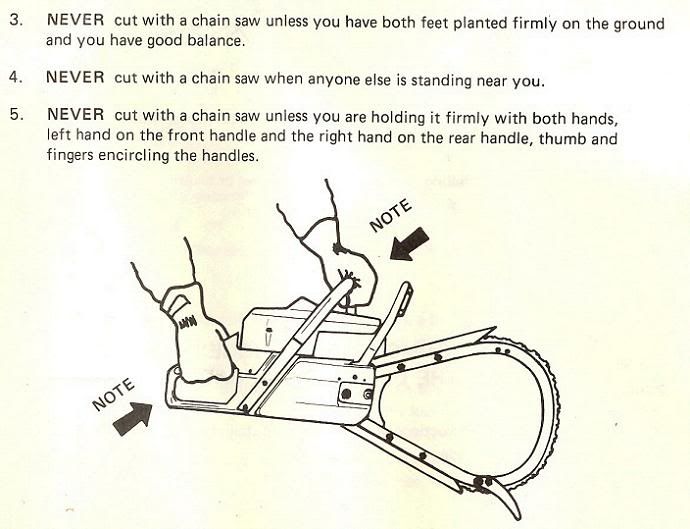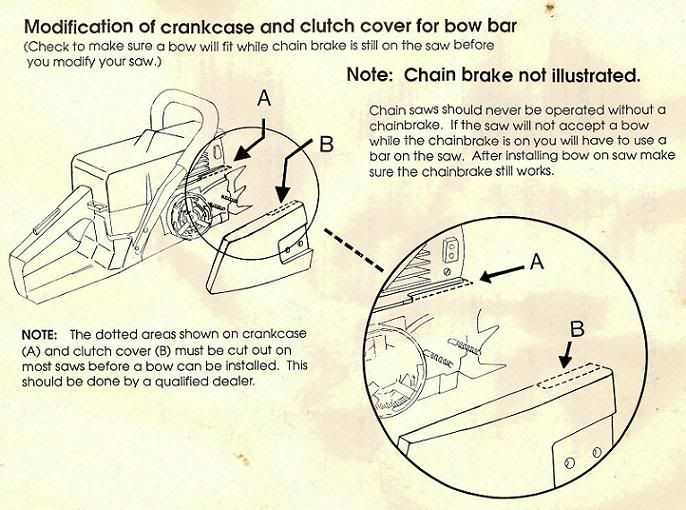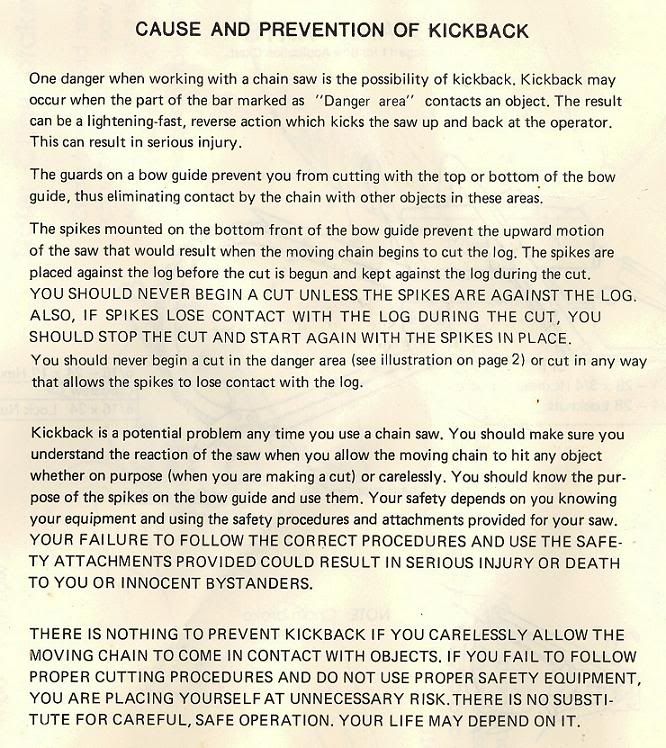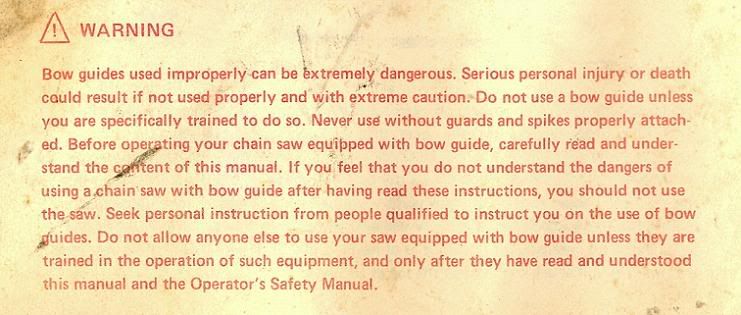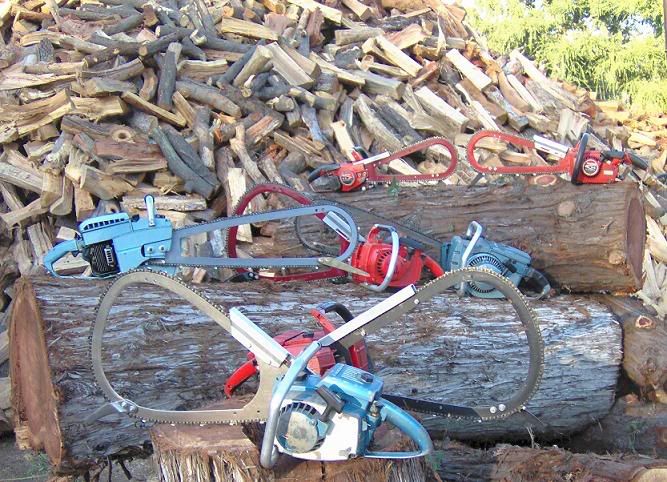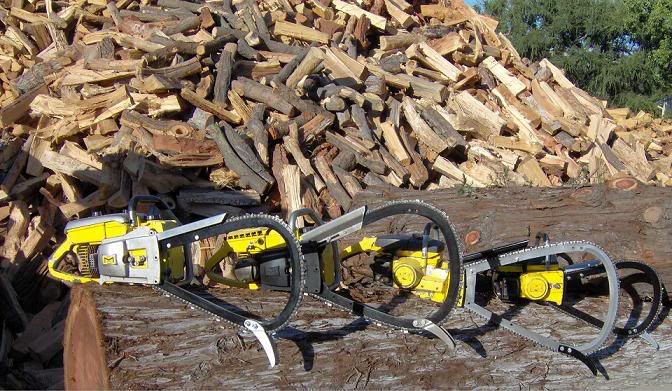Mr. Bow Saw
Addicted to ArboristSite
History of the Bow Chain Saw, the Pulpwood Saw.
by Tom Hawkins & Sons
The begining's of the modern day bow type chain saw can be directly traced back to the the orginal intended use of such a saw, back when it was first invented. The first bow shaped chain saw, appears to be the 1916 Swedish made Sector. But it and several other bow shaped saws that followed, were just that, bow shaped, but not a bow saw.
The bow saw as we refer to it here, was intended mainly for the purpose of a repetitive bucking situation. The term "bucking" is the process of cutting a log into sections, short or long pieces. Bow saws were designed mostly for the harvesting of pulpwood, used for the making of paper, usually cut into 4ft. lengths. The paper industry was huge and required large amounts of wood to make paper pulp. Paper mills provided many a woodsman the opportunity to earn a living by cutting pulpwood. The bow type chain saws have a bar that will not bind or pinch in the cut (kerf), it's a saw that was purposely designed to be pinchless. Those early bow "shaped" chain saws such as the Sector were never designed or intended for this purpose, and therefore are not true bow saws, in our opinion.
Poulan's creation of the bow bar during WWII is considered the start of the modern day bow type chain saw. The company's history tells a colorful story about how Poulan formed his first working bow bar attachment from an old discarded truck fender. Poulan purposely designed this attachments cutter bar with a downward bow so that it would protrude all the way to the bottom of the log during a cut. He also made the bar thin and narrow to prevent pinching and binding. Poulan began selling his bow saw attachments, which he called "Speed Saw" attachments, in 1946. Poulan also began working on a prototype for a complete chain saw of his own, and by mid 1948 the Poulan model 2400 was being offered throughout the south.
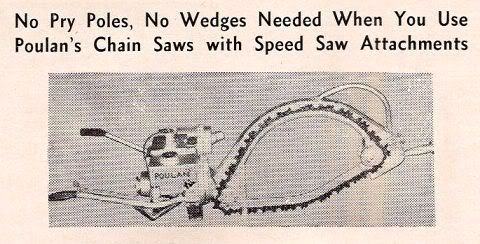
The first Poulan chain saws, seem to have had a very low total production, we find several factors that could explain why.
1: Poulan's capital was limited and it slowed the start-up of a full and complete production line, before 1950
2: The model:2400 saw itself was not at all the best, it was big and bulky, making it hard to use and move though the woods.
3: Southern loggers of the time seem to have prefered the larger push type circular saws mounted on wheels, that is until the one man type bow saw models came along.
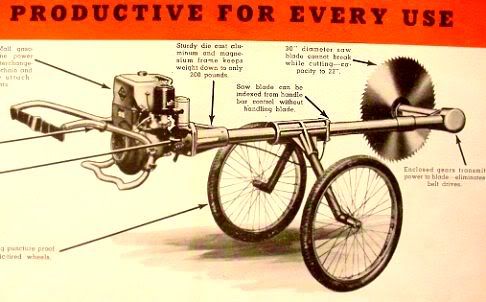
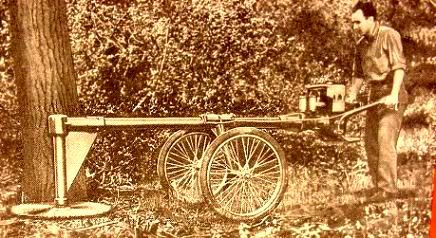
The first bow type chain saw to have a major impact on the saw market was made in the target rich environment of Quebec, Canada, a large pulpwood producing area. From there it expanded sales by moving down through the pulpwood areas of New England, and beyond. The 1946 Precision saw, was the first one-man gasoline bow saw in the world. It was a 3.5 hp machine that offered three different bow lengths, it was quickly dubbed "The King of the Woods", because it was fairly light and easy to use.
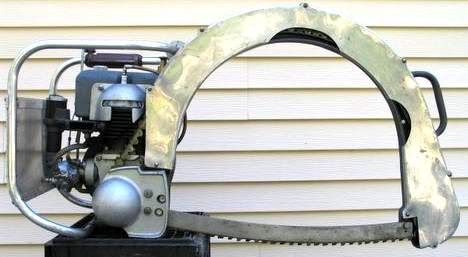
The Precision chain saw was sold by the thousands, and this caught the attention of other manufacturers.
Mall took the next step in the evolution of the bow saw in 1947, when they produced the first one piece (full loop) bow saw. However the importance of this design would not became apparent until years later.
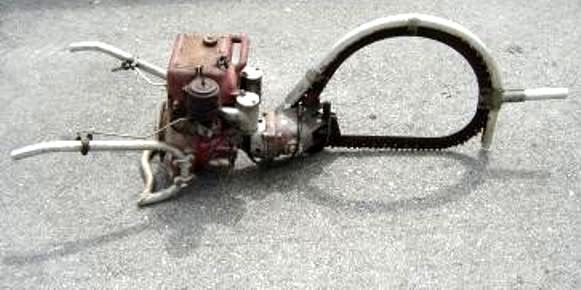

Disston entered the bow saw market in 1948 with the introduction of it's one-man model O-100 chain saw, which offered an optional 14" (staddle chain) bow bar. This is believe to be the only staddle type bow ever marketed by any manufacturer. It cut a much wider kerf and therefore was soon abandoned in favor of a standard style chain.
O-100 chain saw, which offered an optional 14" (staddle chain) bow bar. This is believe to be the only staddle type bow ever marketed by any manufacturer. It cut a much wider kerf and therefore was soon abandoned in favor of a standard style chain.
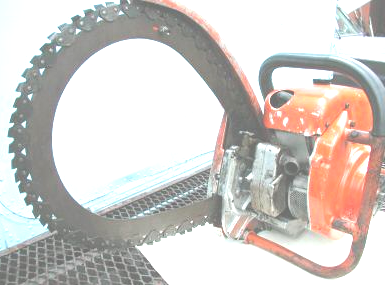
by Tom Hawkins & Sons
The begining's of the modern day bow type chain saw can be directly traced back to the the orginal intended use of such a saw, back when it was first invented. The first bow shaped chain saw, appears to be the 1916 Swedish made Sector. But it and several other bow shaped saws that followed, were just that, bow shaped, but not a bow saw.
The bow saw as we refer to it here, was intended mainly for the purpose of a repetitive bucking situation. The term "bucking" is the process of cutting a log into sections, short or long pieces. Bow saws were designed mostly for the harvesting of pulpwood, used for the making of paper, usually cut into 4ft. lengths. The paper industry was huge and required large amounts of wood to make paper pulp. Paper mills provided many a woodsman the opportunity to earn a living by cutting pulpwood. The bow type chain saws have a bar that will not bind or pinch in the cut (kerf), it's a saw that was purposely designed to be pinchless. Those early bow "shaped" chain saws such as the Sector were never designed or intended for this purpose, and therefore are not true bow saws, in our opinion.
Poulan's creation of the bow bar during WWII is considered the start of the modern day bow type chain saw. The company's history tells a colorful story about how Poulan formed his first working bow bar attachment from an old discarded truck fender. Poulan purposely designed this attachments cutter bar with a downward bow so that it would protrude all the way to the bottom of the log during a cut. He also made the bar thin and narrow to prevent pinching and binding. Poulan began selling his bow saw attachments, which he called "Speed Saw" attachments, in 1946. Poulan also began working on a prototype for a complete chain saw of his own, and by mid 1948 the Poulan model 2400 was being offered throughout the south.

The first Poulan chain saws, seem to have had a very low total production, we find several factors that could explain why.
1: Poulan's capital was limited and it slowed the start-up of a full and complete production line, before 1950
2: The model:2400 saw itself was not at all the best, it was big and bulky, making it hard to use and move though the woods.
3: Southern loggers of the time seem to have prefered the larger push type circular saws mounted on wheels, that is until the one man type bow saw models came along.


The first bow type chain saw to have a major impact on the saw market was made in the target rich environment of Quebec, Canada, a large pulpwood producing area. From there it expanded sales by moving down through the pulpwood areas of New England, and beyond. The 1946 Precision saw, was the first one-man gasoline bow saw in the world. It was a 3.5 hp machine that offered three different bow lengths, it was quickly dubbed "The King of the Woods", because it was fairly light and easy to use.

The Precision chain saw was sold by the thousands, and this caught the attention of other manufacturers.
Mall took the next step in the evolution of the bow saw in 1947, when they produced the first one piece (full loop) bow saw. However the importance of this design would not became apparent until years later.


Disston entered the bow saw market in 1948 with the introduction of it's one-man model






